BenQ PD2700U 4K HDR Monitor Review: Pro-Level Accuracy, Attractive Price
Why you can trust Tom's Hardware
HDR Performance
The PD2700U locks onto HDR10 signals instantly and switches into HDR mode without issue. We missed the extra color afforded by a DCI-P3 gamut, but the mode tracked color points for Rec.709 accurately and hit most of the wide gamut targets.
HDR Brightness & Contrast
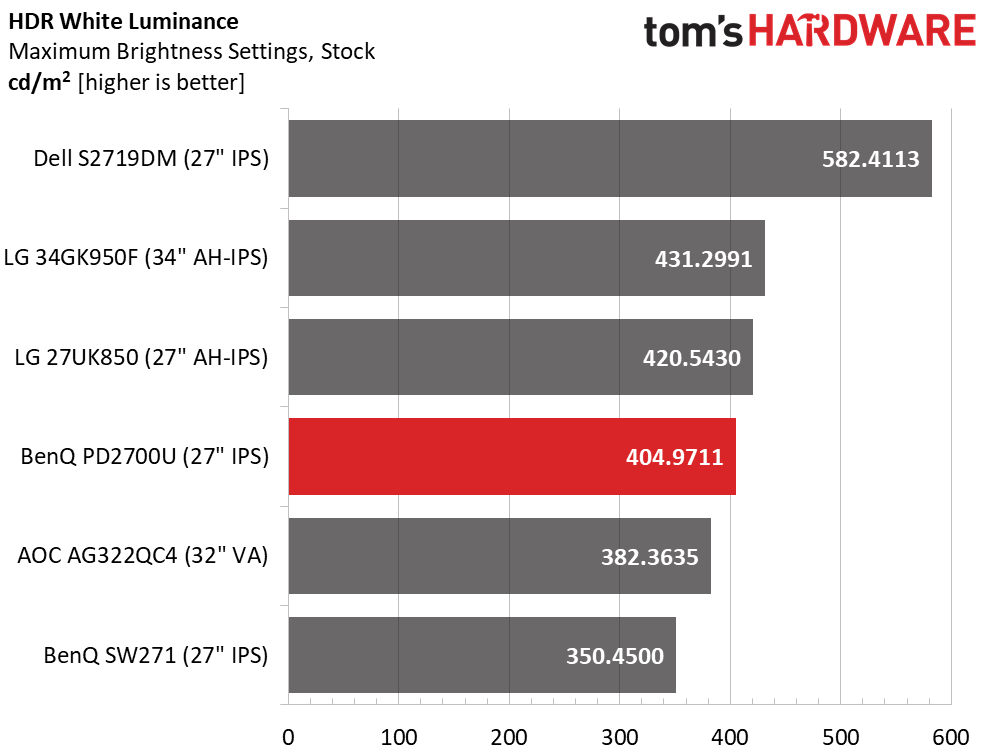
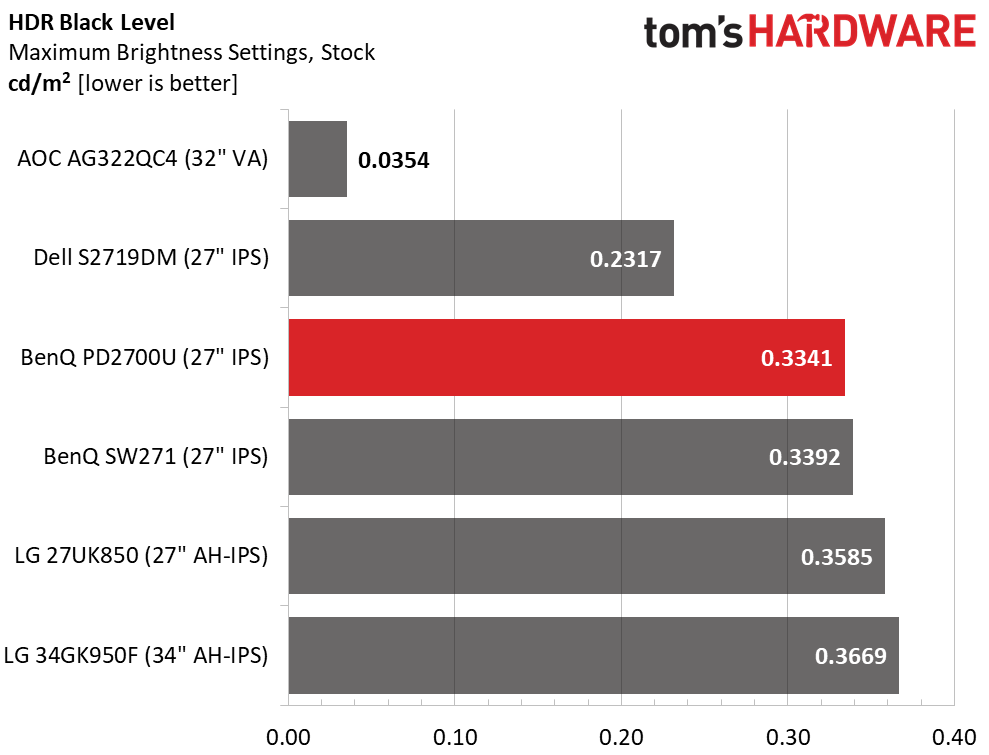
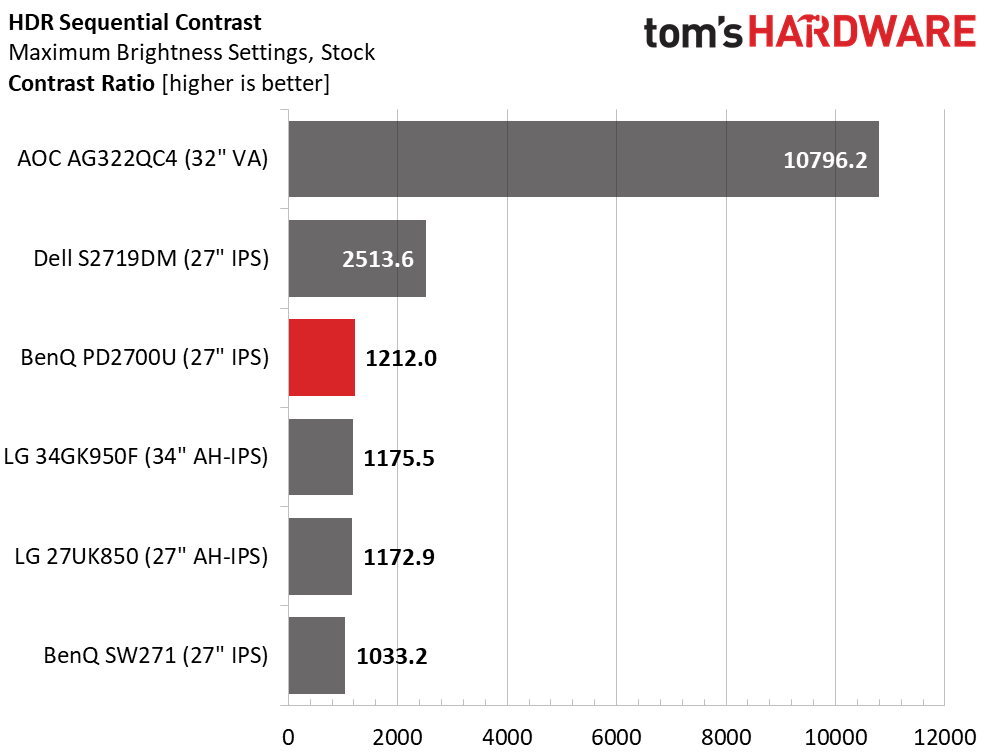
With HDR content, the monitor peaked at just over 400 nits, which is a good level for bold highlights and bright color.
Shadow detail was solid, though it can’t compete with a VA panel or a screen with a full-array backlight.
Our testing revealed HDR sequential contrast to be just 1,212:1, which is only about seven percent higher than the SDR number. A more aggressive dynamic contrast feature would likely have helped.
Grayscale, EOTF & Color
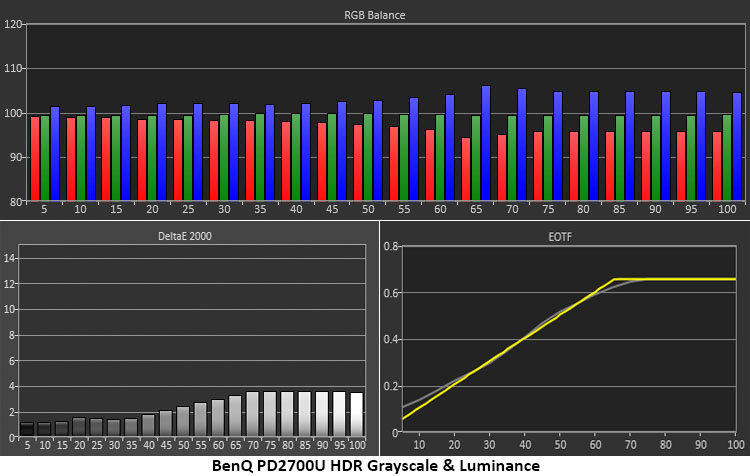
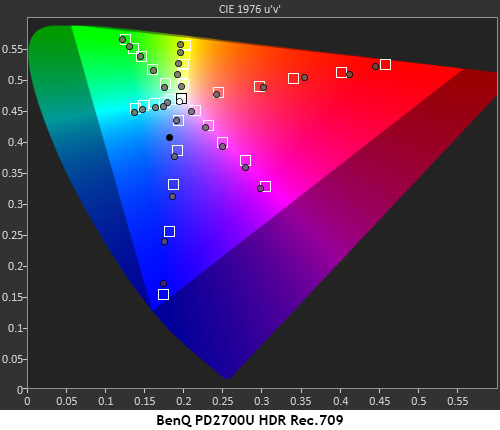
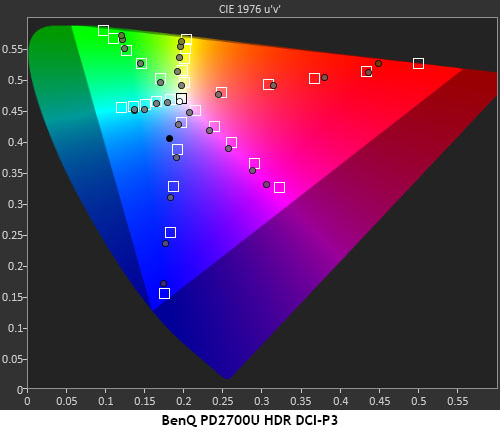
Luminance tracking is a very important step towards proper HDR-rendering, and the PD2700U checks those boxes. Grayscale runs a tad cool, but errors are not visible until it passes the clip point at 65 percent. The EOTF curve is a little too bright in the blackest parts of the image but quickly snaps to the line up to a soft-clip at 65 percent. Resulting image quality is good with solid contrast and delineation of dark and light objects.
While we missed the DCI-P3 color gamut, the PD2700U manages to track targets in both Rec.709 and DCI well. 709 points are either right on the mark or a little over-saturated, but it’s not a visible issue. The DCI gamut tracks well until the display runs out of color, at which point it adjusts hue for a little deeper red and green. This is the right way to compensate for a smaller color gamut when showing HDR material. We also saw extra color luminance, which makes all hues more vivid.
MORE: Best Gaming Monitors
Get Tom's Hardware's best news and in-depth reviews, straight to your inbox.
MORE: How We Test Monitors
MORE: All Monitor Content
Current page: HDR Performance
Prev Page Grayscale, Gamma and Color Next Page Viewing Angles, Uniformity, Response and Lag
Christian Eberle is a Contributing Editor for Tom's Hardware US. He's a veteran reviewer of A/V equipment, specializing in monitors. Christian began his obsession with tech when he built his first PC in 1991, a 286 running DOS 3.0 at a blazing 12MHz. In 2006, he undertook training from the Imaging Science Foundation in video calibration and testing and thus started a passion for precise imaging that persists to this day. He is also a professional musician with a degree from the New England Conservatory as a classical bassoonist which he used to good effect as a performer with the West Point Army Band from 1987 to 2013. He enjoys watching movies and listening to high-end audio in his custom-built home theater and can be seen riding trails near his home on a race-ready ICE VTX recumbent trike. Christian enjoys the endless summer in Florida where he lives with his wife and Chihuahua and plays with orchestras around the state.